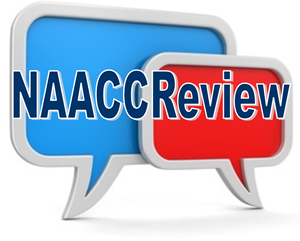
Lihua Liu, PhD., Assistant Professor, Los Angeles Cancer Surveillance Program (NAACCR Committee Member)
With its large and diverse population, the Los Angeles Cancer Surveillance Program has always emphasized the importance of monitoring cancer trends and patterns among racial/ethnic populations. After demonstrating the substantially varied cancer risk patterns across Asian ethnic subgroups, researchers at the University of Southern California have begun to focus on understanding possible cancer disparities among the heterogeneous Latino subpopulations. Using data from the California Cancer Registry for 1995-2011, the researchers documented differences in colorectal cancer incidence characteristics and risk estimates among Latino subgroups defined by country of origin. The findings highlight the impact of generations of population admixture across Latin America and varying degrees of acculturation among Latinos in California on colorectal cancer risk disparities, which deserves further investigation. This study underscores the importance of considering the heterogeneity within the Latino population, and the need to improve the collection of detailed ethnic and birthplace information to facilitate cancer research and control strategies.
Read Full Article (The abstract below is an article originally posted on Springer Link)
Abstract
Purpose
In California, colorectal cancer (CRC) is the second most common cancer in Latinos. Using data from the California Cancer Registry, we investigated demographic and clinical characteristics of 36,133 Latinos with CRC living in California during 1995–2011 taking into account subpopulations defined by country of origin.
Methods
Cases were defined as Latino according to the North American Association of Central Cancer Registries Hispanic Identification Algorithm, which was also used to group cases by country of origin: Mexico (9,678, 27 %), Central or South America (2,636, 7 %), Cuban (558, 2 %), Puerto Rico (295, 1 %), and other or unknown origin (22,966, 64 %; Other/NOS). 174,710 non-Hispanic white (NHW) CRC cases were included for comparison purposes. Annual age-adjusted incidence rates (AAIR) and proportional incidence ratios (PIRs) were calculated.
Results
Differences were observed for age at diagnosis, sex distribution, socioeconomic status (SES), nativity (US born vs. foreign born), stage, and tumor localization across Latino subpopulations and compared to NHW. Mexican Latinos had the lowest AAIR and Cuban Latinos had the highest. PIRs adjusted for age, SES, and nativity showed an excess of CRC males and female cases from Cuba, female cases from Puerto Rico and reduced number of female cases from Mexico.
Conclusions
Differences in cancer incidence patterns and tumor characteristics were observed among Latino subpopulations in California. These disparities may reflect differences in cancer determinants among Latinos; therefore, given that country of origin information is unavailable for a large proportion of these patients, greater efforts to collect these data are warranted.
The opinions expressed in this article are those of the authors and may not represent the official positions of NAACCR.





 The NAACCReview has been live for 6 months now and has been averaging a post every two weeks or so. Our small Editorial Board is looking for a few more members to allow us to increase this frequency. We have two categories of postings, and the process is simple for each. For news posts, find an innovative example of registry data use – whether it be from word-of-mouth, a published study, or something you saw in the news – write a short blurb about why NAACCR members would find this of interest, include a link to the full story, and we’ll post it. For editorial posts, the process is similar, except that here we additionally solicit commentary from experts in our field.
The NAACCReview has been live for 6 months now and has been averaging a post every two weeks or so. Our small Editorial Board is looking for a few more members to allow us to increase this frequency. We have two categories of postings, and the process is simple for each. For news posts, find an innovative example of registry data use – whether it be from word-of-mouth, a published study, or something you saw in the news – write a short blurb about why NAACCR members would find this of interest, include a link to the full story, and we’ll post it. For editorial posts, the process is similar, except that here we additionally solicit commentary from experts in our field.
 Amy Kahn, MS, Research Scientist, New York State Cancer Registry (NAACCR Committee Member)
Amy Kahn, MS, Research Scientist, New York State Cancer Registry (NAACCR Committee Member) Solid organ transplant recipients, who are medically immunosuppressed to prevent graft rejection, have increased melanoma risk, but risk factors and outcomes are incompletely documented. We evaluated melanoma incidence among 139,991 non-Hispanic white transplants using linked US transplant-cancer registry data (1987–2010).We used standardized incidence ratios (SIRs) to compare incidence with the general population and incidence rate ratios (IRRs) from multivariable Poisson models to assess risk factors. Separately, we compared post-melanoma survival among transplant recipients (n
Solid organ transplant recipients, who are medically immunosuppressed to prevent graft rejection, have increased melanoma risk, but risk factors and outcomes are incompletely documented. We evaluated melanoma incidence among 139,991 non-Hispanic white transplants using linked US transplant-cancer registry data (1987–2010).We used standardized incidence ratios (SIRs) to compare incidence with the general population and incidence rate ratios (IRRs) from multivariable Poisson models to assess risk factors. Separately, we compared post-melanoma survival among transplant recipients (n
 Comments by:
Comments by: Every year, thousands of people like Blanca Guerra call the National Cancer Information Center, desperate to find some kind of health insurance.
Every year, thousands of people like Blanca Guerra call the National Cancer Information Center, desperate to find some kind of health insurance.

